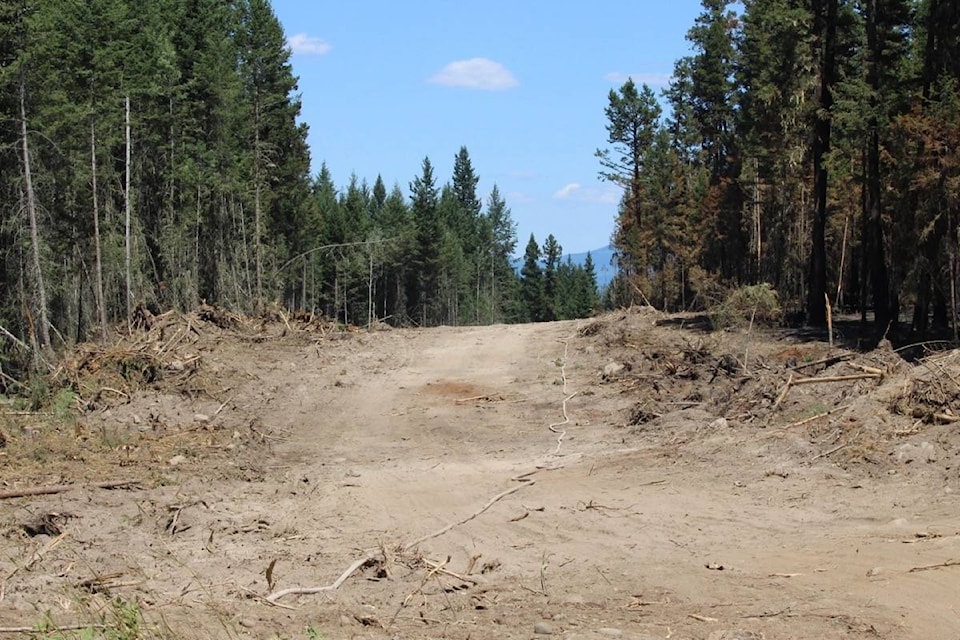During last summer’s wildfires, some 5,000 km of firebreaks were created throughout the province, with an estimated 1,290 km in the area covered by the Elephant Hill wildfire.
Kevin Boon, president of the BC Cattlemen’s Association, is calling on the provincial government to start remediating the land disturbed by the firebreaks, before erosion and invasive species make the situation worse.
“When you look at that kind of acreage, land coverage will take years, and some of the land may never be remediated,” says Boon, noting that a lot of work has already started. “There have been some deals with landowners for them to do their own work, and there’s an option for ranchers to do a deal if they have the equipment, with crews going into other areas.
“We know what the cost is, what the battle is. We need growth on those areas: grasses to hold the soil in place. With the fires and the loss of trees, and a much faster freshet in the spring, there could be flooding and soil erosion. We need healthy, good plants; for livestock, but mostly to get the land back to normal. If you don’t treat the wound it will keep growing.”
Boon says they lost their best chance for seeding in the fall, but adds that if there is not too much snow, seed can be laid on top of that for spring. “We’ve had good results over light snow, and it’s best to get the seed down before spring, when there’s moisture and you can get germination.”
Boon estimates that the firebreaks cover approximately 30,000 acres, and that depending on the seed mixture used, it would cost $50 to $100 per acre to reseed, or between $1.5 and $3 million in total. “That’s pretty small when compared with what you’d spend on weed control. If we get further infestations [of invasive species] it’s a losing battle.”
Although ATV and UTV use was banned in areas affected by the Elephant Hill wildfire, anecdotal evidence suggests that some people are circumventing this by using the firebreaks as unofficial roads and driving on-road vehicles on them. A spokesperson for the Ministry of Forests, Lands, Natural Resource Operations, and Rural Development (FLNRO) says that while the B.C. Conservation Officer Service has not received any recent complaints about hunters in pickups driving on firebreaks, they have done extensive patrols by chopper and ground, and have followed up on any complaints.
All calls regarding suspected violations should go to the RAPP (Report All Poachers and Polluters) line at 1-877-952-7277.
Boon says that if people are going into the affected areas on foot or in vehicles, they could be spreading invasive species. “The firebreaks have created 5,000 km of access, and people don’t necessarily understand the damage that can be done. If people drive through in trucks or quads, or even walk, they can pick up weeds and drag them for miles. It compounds the problem and creates another hazard, and we need to do some education. It’s a huge concern. The damage has been done; let’s not do more.”
The FLNRO spokesperson says that Ministry range staff are working to prevent the introduction and spread of invasive plants in highly impacted areas, and that this includes reseeding grasslands in priority areas, which will begin as soon as seeding conditions are optimal for germination and establishment.
Boon says that about 95 per cent of the 100 km of highway fencing destroyed in the fires has been replaced, with the rest set to be completed by the beginning of April. “We’ve contracted with the government to replace infrastructure range fencing. Some of it will be replaced, and in some places there might not be new fencing required, but where other barriers have been burned we might need new fencing. We’ll ensure that fences go where they need to be.”
Boon expects that the process of replacing the required fencing will take four to five years. “Assessment is still ongoing, and the range branch will be prioritizing where fences are needed the most.”
He says that the issue they are confronted with right now is grazing land. “We’ve lost a lot of grassland. It will grow back, and grow well, but that will take a couple of years. Where the fire burned hot it might need soil work.” Boon adds that some grazing areas have seen the animal unit months cut back by 40 per cent (an animal unit month is the amount of forage required by one 1,000 beef cow with or without a nursing calf).
“Assessments are being done right now, but it’s hard to assess the potential for the grass to come back,” says Boon. “The challenge will be where do we find feed for cattle. We need to find other feed; maybe land that’s not in use or hasn’t been used for livestock, but the fences might not have been kept up, and it’s difficult for ranchers to move animals 200 km. Maybe we bring in feed, or people might need to sell off some animals.
“There are some solutions, none of them great. We’ll have to adapt, and individual operations will have to look at their needs.”
editorial@accjournal.ca
Like us on and follow us on




